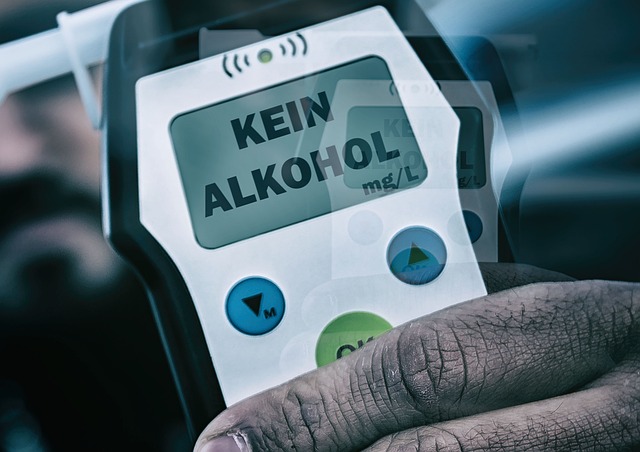Youth DUI Prevention Programs address pedestrian safety by educating young people about drinking and driving risks, responsible decision-making, and safe walking practices. These programs aim to reduce Youth DUI instances, lower injury rates, and create a culture of safety. By engaging youth through workshops, awareness campaigns, and community involvement, these initiatives empower them to demand and maintain safer streets for all vulnerable pedestrians.
In urban areas, ensuring safe streets for pedestrians, especially youth, is paramount due to growing concerns over traffic-related injuries and fatalities. This article delves into critical aspects of pedestrian safety, focusing on youth protection against drunk driving (DUI). We explore strategies such as understanding risk factors for young pedestrians, the devastating impact of DUI on this vulnerable group, and successful community initiatives in prevention and education. Additionally, we discuss urban planning approaches to create safer streets and engage youth in shaping their environments, highlighting key metrics for evaluating Youth DUI Prevention Programs.
- Understanding Pedestrian Safety Risks for Youth
- The Impact of DUI on Young Pedestrians
- Community Programs for Prevention and Education
- Designing Safe Streets for Vulnerable Users
- Engaging Youth in Creating Safer Environments
- Measuring Success: Evaluating DUI Prevention Efforts
Understanding Pedestrian Safety Risks for Youth

Pedestrians, especially youth, face unique safety risks on our streets. With increasing rates of distracted driving and the presence of impaired drivers, young pedestrians are at a higher risk of accidents and injuries. This is where Youth DUI Prevention Programs step in as vital tools for enhancing pedestrian safety. These programs focus on raising awareness about the dangers of drinking and driving, targeting young people who are both potential victims and at-risk drivers.
By educating youth about responsible decision-making, safe walking practices, and the consequences of impaired driving, these programs aim to reduce instances of Youth DUI and, consequently, lower pedestrian injury rates. They play a crucial role in fostering a culture of safety and accountability within communities, ensuring that young individuals understand their rights to safe streets and the responsibilities that come with them.
The Impact of DUI on Young Pedestrians

The impact of Driving Under the Influence (DUI) on young pedestrians is a pressing issue that demands attention. With rising rates of youth DUI, the safety of children and adolescents walking in their communities becomes increasingly compromised. These incidents often result in severe injuries or even fatalities, leaving profound and lasting effects on families and neighborhoods alike.
Youth DUI Prevention Programs play a pivotal role in mitigating these risks. By educating young people about the dangers of impaired driving and promoting responsible behavior, these programs aim to foster a culture of safety and awareness. Through interactive workshops, community outreach, and support networks, they empower individuals to make informed choices, ensuring that our streets remain safe for everyone, especially the most vulnerable pedestrians.
Community Programs for Prevention and Education

Many communities have recognized the importance of addressing pedestrian safety, especially regarding youth and preventing dangers like DUI (driving under the influence). To this end, various programs have been initiated to educate young people about the risks associated with impaired driving and promote safer street behavior. These Youth DUI Prevention Programs often involve interactive workshops, mock scenarios, and awareness campaigns that target schools and community centers. By engaging youths in these initiatives, communities aim to instill a culture of responsible decision-making and respect for pedestrian rights.
The programs not only teach about the legal consequences of drinking and driving but also emphasize the potential impact on pedestrians’ safety. Through role-playing and real-life stories, participants gain insights into how their actions can affect others. These educational initiatives play a vital role in fostering a sense of community responsibility, ensuring that everyone, particularly vulnerable pedestrians, is protected from preventable accidents and injuries.
Designing Safe Streets for Vulnerable Users

Designing safe streets involves prioritizing the most vulnerable users, particularly children and elderly pedestrians, as well as those with disabilities. This requires a multi-faceted approach that includes dedicated pedestrian walkways, well-maintained crosswalks, and clear signage to enhance visibility and reduce confusion. Implementing speed bumps and reduced vehicle speeds in residential areas also significantly improves safety.
Furthermore, communities can benefit from Youth DUI Prevention Programs that educate young people about the dangers of driving under the influence and promote responsible decision-making. Integrating these programs with safe street design initiatives ensures a holistic approach to pedestrian safety, fostering environments where all users, regardless of age or ability, can navigate with confidence and peace of mind.
Engaging Youth in Creating Safer Environments

In creating safer street environments, engaging youth is a powerful strategy that fosters a sense of responsibility and ownership. Many communities are recognizing the importance of involving young people in initiatives aimed at enhancing pedestrian safety, especially in light of issues like Youth DUI Prevention Programs. By encouraging youth participation, organizations can tap into their energy, creativity, and fresh perspectives to identify potential hazards and propose solutions tailored to local needs.
This involvement can take various forms, such as student-led campaigns, community service projects, or partnerships with schools and local authorities. Engaging youth in pedestrian safety efforts not only empowers them to make informed decisions but also helps in developing long-lasting habits that contribute to a culture of road safety awareness.
Measuring Success: Evaluating DUI Prevention Efforts

Evaluating the success of youth DUI prevention programs is crucial for understanding their impact on road safety. Measuring success goes beyond simply counting the number of arrests or incidents; it requires a comprehensive approach that considers long-term behavioral changes and public perception shifts. By assessing factors such as reduced drunk driving rates, increased awareness among young people, and improved attitudes towards responsible drinking, we can gauge the effectiveness of these programs.
Effective DUI prevention efforts should not only target individuals but also foster a culture of responsibility and accountability within communities. This includes measuring the reach and engagement of educational initiatives, support groups, and peer-to-peer mentoring programs designed to empower youth to make informed decisions about alcohol consumption. Such evaluations help identify best practices, inform policy decisions, and ultimately contribute to safer streets for all.
Pedestrians’ rights and safe streets are paramount to fostering healthy communities. By understanding specific risks faced by youth, addressing the devastating impact of DUI on young pedestrians, and implementing community programs for prevention and education, we can create a more secure environment. Designing inclusive streets that prioritize vulnerable users, engaging youth in shaping safer spaces, and measuring success through effective DUI prevention efforts are essential components of this ongoing process. Together, these initiatives contribute to comprehensive Youth DUI Prevention Programs, ensuring that everyone can enjoy the public space without undue risk.






